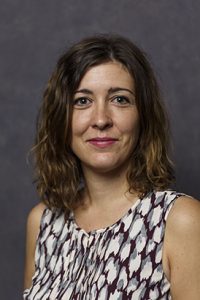From the May 2018 Desktop News | Dr. Jessica Goethals, an assistant professor of Italian in the Department of Modern Languages and Classics, was recently awarded the William Nelson Prize from the Renaissance Society of America for her 2017 article “The Patronage Politics of Equestrian Ballet: Allegory, Allusion, and Satire in the Courts of Seventeenth-Century Italy and France.”

The award, given annually to the best article published in Renaissance Quarterly each year, is given by the Renaissance Society of America. The society has over 5,000 members around the world and includes disciplines ranging from architecture, religion, book history, language, philosophy, and gender.
Goethals’s interest in Baroque equestrian ballets began on a trip to Florence, where she came across a manuscript of a proposal for an elaborate production by Margherita Costa, a famous opera singer and writer active throughout Europe during this period.
“The moment you open a manuscript and it says ‘horse ballet,’ that raises some questions,” Goethals said. “And it was fascinating to me that not that many people have looked at it in terms of scholarship, and that dearth of scholarship is completely out of proportion with how fantastic they were.”
The ballets, which took place in stadium-style outdoor theatres, drew from epic poetry and centered on allegorical themes. The horses became colorfully-costumed “combatants,” and were divided into groups to act out a battle through dressage movements set to music.
The opera, ballet, and equestrian aspects of the productions were enhanced by giant mechanical figures and creatures that moved across the stage. Thousands of people flocked to large cities to witness what Goethals calls the “Broadway of the Baroque period,” and some of the high-ranking officials even participated.
“The noble people of the court, such as the duke himself, would all be riders in the production,” Goethals said. “It’s really a moment where the city puts itself on display and shows all its capabilities: your ability to ride horses, to play music, to have these machines.”
Margherita Costa, who is the subject of Goethals’s article, was a prominent performer of the Baroque period in Florence. Known as an extremely skilled writer and singer, Costa decided to write her own librettos and present them to high-ranking members of society, such as the grand duke of Florence and the king of France.
“Margherita was all over the place, incredibly famous and a well-respected writer, who, over time, fell into the shadows because of assumptions about women’s roles in this period of time,” Goethals said. “She’s an explosive figure who’s understudied in an explosive genre that’s understudied.”
The Baroque period is Goethals’s favorite to study because of the parallels and ramifications of the period in modern-day society. In the future, she plans to study other forms of art from the 17th century and their effects on society, both from the Baroque period and today.
“There’s so much exciting stuff happening in that period,” Goethals said. “It’s not some distant period that we can’t relate to. These are moments where people are trying to be innovative, to bring together different disciplines and areas of expertise. There’s a commonality between then and now that I’m hoping to point people to.”